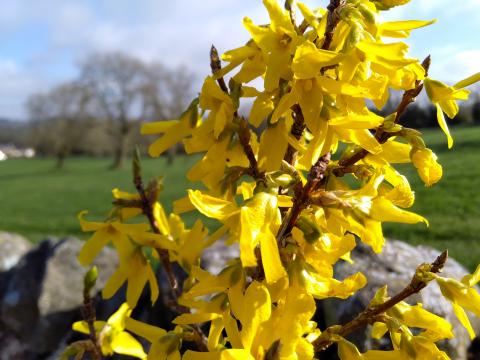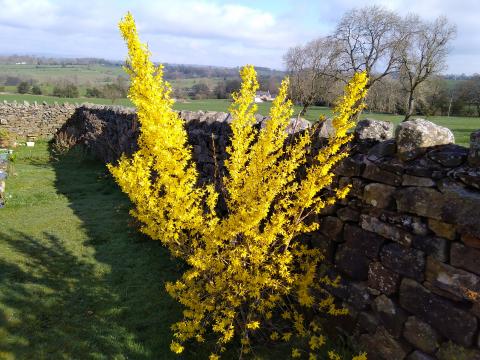Forsythia

In full bloom to our chapel’s rear is a Forsythia, resplendent in yellow. It is one of those peculiar plants which resolves to flower without first troubling to grow leaves; consequently, we enjoy its colour before much else.
It is named after William Fosyth, King George III’s gardener in the eighteenth-century. In 1789, he received a grant of £1500 from Parliament to develop his ‘plaister’. This was a concoction of cow dung, wood ash, lime and sand which he claimed would heal those diseased trees to which it was applied. We were then fighting the Napoleonic French by land and sea, and a shortage of timber for shipbuilding was proving critical. Forsyth’s remedy persuaded the national legislature that many of the diseased trees might be made whole and therefore serviceable for the Royal Navy. Sadly for the Admiralty and Mr Forsyth, his plaister was declared a useless fraud, after it was published in The London Gazette and its benefits found wanting.
Plant and tree diseases may be successfully treated, but many sickly specimens cannot be saved. More ailing still, is the human heart; it is corrupted and contaminated by such evils as selfishness, greed, bitterness and pride. Well-meaning people apply poultices and plaisters to it, such as strict morality, soothing meditation and pious ritual. Sadly, no effective medicine for so diseased an object can be found. God, however, speaking through Ezekiel the prophet, declares:
I will give you a new heart and put a new spirit within you; I will take the heart of stone out of your flesh and give you a heart of flesh. (36:26)

- Log in to post comments


 Sunday Worship 10.45am & 6.00pm
Sunday Worship 10.45am & 6.00pm